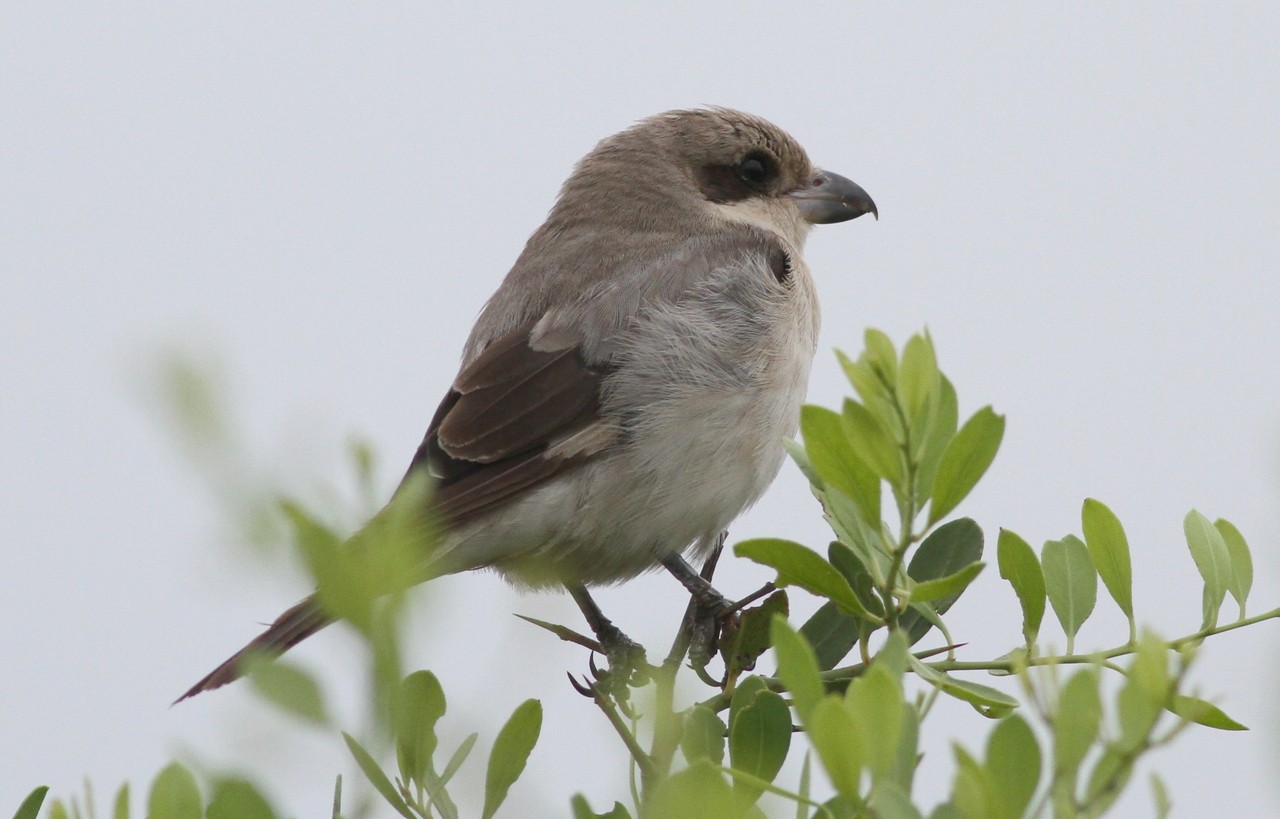Lesser Grey Shrike
A species of Typical shrikes Scientific name : Lanius minor Genus : Typical shrikes
Lesser Grey Shrike, A species of Typical shrikes
Botanical name: Lanius minor
Genus: Typical shrikes
Content
Description General Info
Description
The adult male lesser grey shrike has its nape, cheeks, ear and eye coverts and front part of the crown black. The hind part of the crown and the back is a pale bluish-grey and the rump is a similar but rather paler colour. The underparts are white with the lower breast and belly suffused with pink. The axillaries are greyish-white and the underwing coverts are brownish-black. The two central tail feathers are black with a white tip and base. The other pairs have increasing areas of white and less black. The primaries are black with a buff tip and white base. The secondaries are black with broader, paler tips but no white bases. The wing coverts are black with the lesser coverts being fringed with grey. The female has similar plumage but the head is dark grey rather than black, the ear coverts brownish-black, the upperparts a brownish-grey and the underparts less pink than the male. The juvenile is similar to the adults but is altogether more brown. It lacks the grey back and rump which are instead pale brown and faintly barred, and the underparts are white and cream without any pink. All birds have a brownish-black beak with a paler base to the lower mandible, brown irises and black legs and feet. Adult length is around 20 cm (7.9 in) with a wing length of 13 cm (5.1 in) and a tarsus length of 2.5 cm (1 in). 
Size
23 cm
Nest Placement
Shrub
Feeding Habits
Lesser Grey Shrike's diet consists of insects, specifically crickets, beetles, and grasshoppers, with occasional spiders and rare small vertebrates. It employs a sit-and-wait strategy from elevated perches, can hover like a kestrel, and sometimes impales prey to store, especially during food surpluses.
Habitat
Lesser Grey Shrike commonly inhabits open and semi-arid regions featuring scattered trees and shrubs, which provide necessary perches and nesting sites. These birds favor areas like gardens, cultivated fields, vineyards, and orchards, preferring lower elevations but can be found up to 2200 meters in some regions. While they breed in sunnier conditions across various parts of Europe and western Asia, they winter in tropical southern Africa's savannas and thornvelds, notably thriving in the Kalahari's dry acacia habitats.
Dite type
Carnivorous
General Info
Feeding Habits
Bird food type
Behavior
The lesser grey shrike hunts from a strategic post, wire or branch and primarily feeds on insects which it catches in the air or on the ground. The diet includes beetles, moths and butterflies, large flies, grasshoppers, crickets and millipedes. Some fruits such as cherries and figs are eaten to a limited extent. The bird occasionally impales freshly caught prey on thorns for use later, but this is done to a much lesser extent than by some other shrike species. It has been shown experimentally that this species only creates a larder when it is satiated and that prey items are seldom plentiful enough for this to be the case. The male has been observed to feed the female before starting to create a food store. Repeated experimental exposure of birds to a food surplus significantly increases the rate at which they impale freshly caught prey. Other causal factors in the failure of this species to hoard may be a shortage of suitable caching sites and the fact that the bird lacks practice in storing food and this constrains its learning ability. The flight of the lesser grey shrike is low and somewhat undulating and it occasionally glides with extended wings. At the end of the flight it swoops upward to land on a new hunting perch. It then turns its head from side to side searching for prey. When on the ground it hops, but it normally only stays there for long enough to pick up an item of food. Like other shrikes, when excited it fans its tail and moves it up and down or from sided to side. It is pugnacious and will defend its nest with vigour and drive away larger birds. 
Distribution Area
The lesser grey shrike spends the summer in South and Central Europe and western Asia. It breeds in southern France, Switzerland, Austria, Czech Republic, Italy, the former Yugoslavia, Albania, Greece, Romania, Bulgaria and southern Russia. In Asia it breeds in the Middle East, its range extending as far as eastern Turkey and Iran. It is a vagrant to more northerly parts of Europe, usually in spring or autumn. Countries where it has been seen include Sweden, Finland, Denmark, United Kingdom, Netherlands, Belgium and northern France. It is a migratory species and winters in a broad belt across tropical southern Africa. During the summer the lesser grey shrike inhabits open countryside, the edges of cultivated areas, heathland with scattered bushes and trees, gardens, coppices, woodland and roadside trees. In its winter quarters it is usually found in scrubland and among thorn trees. 
Species Status
Not globally threatened.
Scientific Classification
Phylum
Chordates Class
Birds Order
Perching birds Family
True shrikes Genus
Typical shrikes Species
Lesser Grey Shrike 